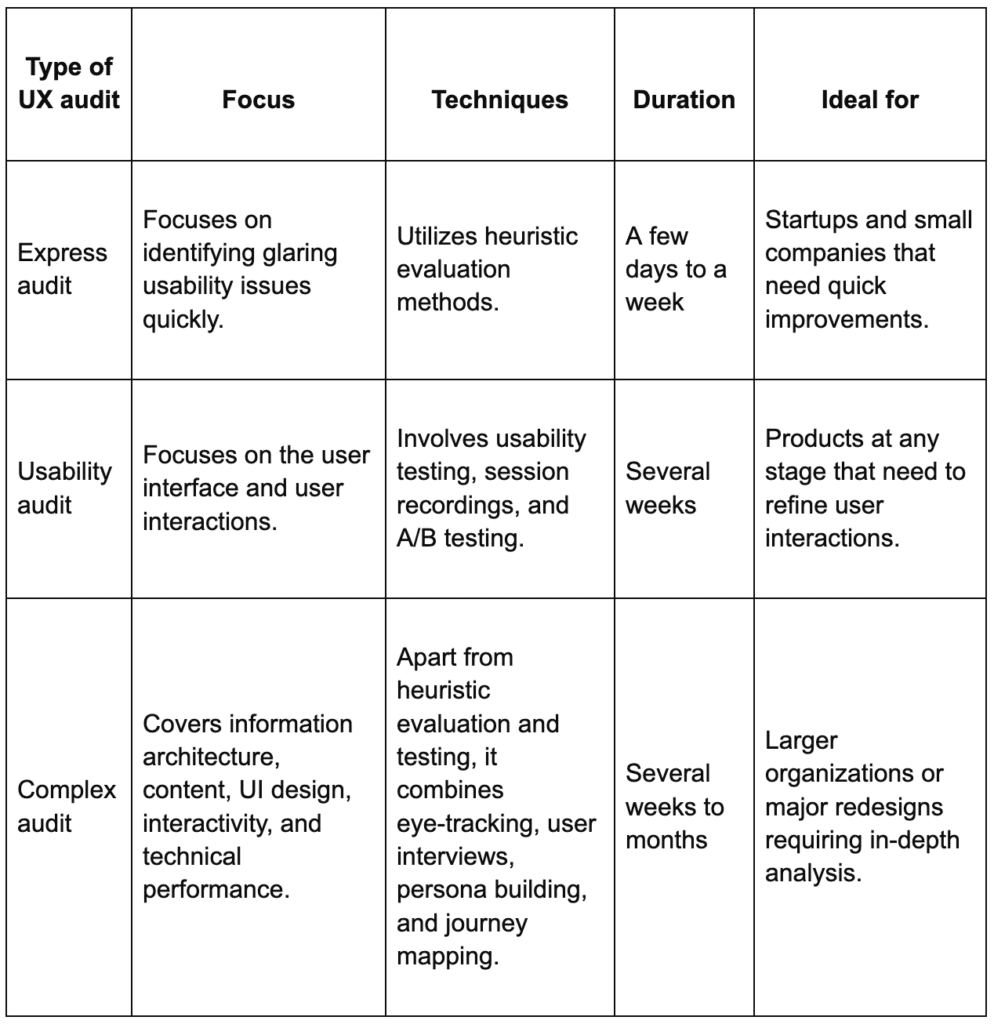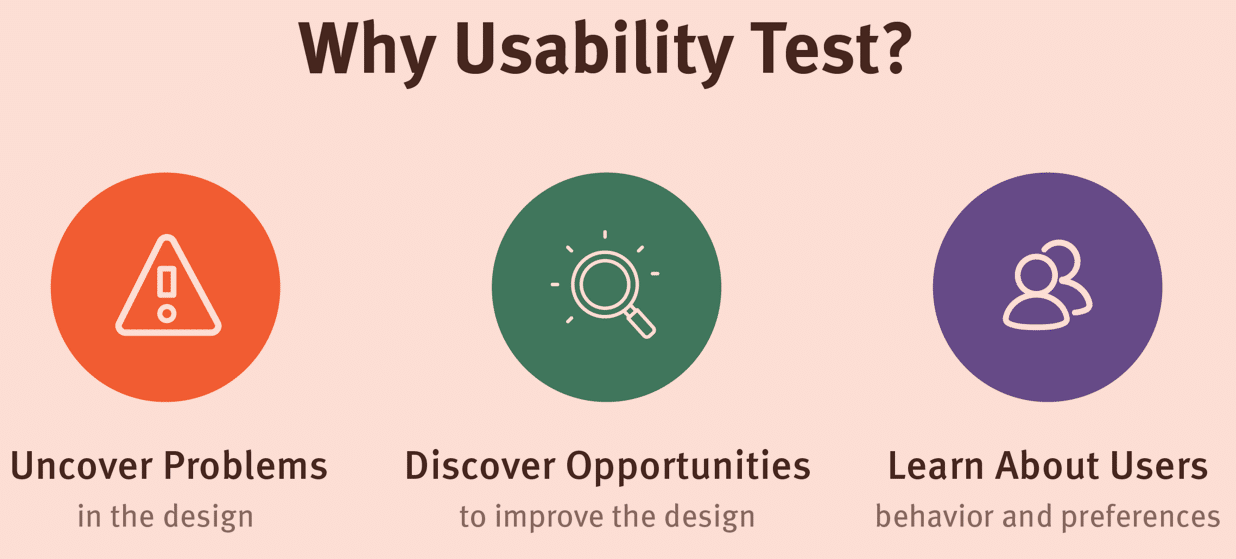If you provide qualified service, have many reviews, and even have a name in your sphere, one thing can destroy everything. We talk about a poor user experience on the website or mobile app.
The crowded market allows users to pick on. That is why bad UX leads to a low user satisfaction level and mediocre conversion rates. To understand whether your UX is efficient, you can perform a UI/UX audit and diminish the flaws that hinder your business strategy.
In this article, we’ll explore:
- What is UX audit?
- How to conduct it?
- What should you do after a UX assessment?
What is a UX audit?
The definition: A user experience audit is a thorough analysis of a product’s interface and how users interact with it.
The goal: Detecting drawbacks and gaps that restrict the user’s ability to execute their tasks.
The result: A set of actionable insights, including specific recommendations for improving UX aspects that are underperforming or causing problems for users.
Who conducts: Typically, a UI UX audit involves designers, product managers, and UI engineers.
Methodology: Heatmaps, analytics, user interviews, and usability testing to collect data on how average users interact with the product.
3 types of audits
A UX assessment can be divided into three types. Every type is tailored to different objectives and timeframes.
How to Conduct a UX Audit?
An average UX audit process can be structured into seven clear steps, each critical to uncovering and addressing usability issues effectively.
- Defining objectives and workscope: You should establish clear goals for the audit, determining which aspects of the product need examination based on business objectives and user feedback.
- Collecting data: At this stage, the UX audit team amasses a baseline of user behavior and existing issues according to the depth and direction of the audit. This can include the user’s typical pattern analytics, user feedback, previous audit reports, competitor analysis, and other essential data.
- Heuristic evaluation: Heuristic evaluation involves reviewing the user interface against a set of recognized usability principles, or “rules of thumb.” These principles cover aspects like system visibility, real-world match, user control, consistency, error prevention, and minimalist design, among others.

- User testing: In more complicated types of UX auditing, real users are involved in testing the usability of the product to observe actual interactions and difficulties faced by users. Gaining direct insights from target users helps in understanding real-world usability issues that might not be apparent from analytics alone.
- Journey mapping: This means mapping out the user’s journey through the product to visualize the complete experience and pinpoint areas where users face obstacles. Visualization of user paths and touchpoints helps in identifying critical moments that either enhance or degrade the user experience.
- Analysis and recommendations: The UX audit team analyzes the collected data and insights to formulate actionable recommendations aimed at resolving the identified issues.
- Report preparation and presentation: Companies provide detailed reports to stakeholders, outlining findings, recommended actions, and prioritized suggestions for improvements.
What should you do with the results?
Once a UX design audit is completed, the results are instrumental in guiding the subsequent steps to enhance a product’s user experience.
Implementing Changes
There are two ways of fixing the faults:
By in-house staff involvement: Using internal resources to address the audit’s findings can be a direct and cost-effective approach. The in-house team can use the detailed recommendations from the audit to prioritize and rectify usability issues, ensuring that changes align closely with the organization’s ongoing development practices and goals.
By addressing outsourcing companies: If the scope of improvements is vast or specialized expertise is required, organizations might consider outsourcing this task to a UX audit company or other external professionals. Outsourcing can be particularly beneficial for implementing high-impact changes that need to be rolled out quickly.
Conduct Ongoing Testing

After implementing changes, continuous testing is essential to evaluate their impact on user behavior and satisfaction. This process may include A/B testing or conducting additional usability tests. Such ongoing testing is vital for refining the interface and confirming that the updates have indeed enhanced usability.
A final tip
To make the best use of your digital presence, conduct a UI UX design audit regularly. Ideally, if you perform auditing biannually. However, there can be circumstances that necessitate additional check-ups:
- After major updates: For example, a redesign or new feature rollout.
- When you see changes in user behavior: For instance, if analytics show a sudden drop in conversion rates or increased bounce rates.
- Before scaling up: In this case, UX audit helps ensure that the platform can handle increased traffic without usability issues.
- After the post-competition analysis: After observing significant changes in competitor platforms, a UX assessment will help to stay the course.
Sources
1. UX-Audit and How to Conduct It – ghurry.com
2. The UX Audit: A Beginner’s Guide – usabilitygeek.com
Published by: Martin De Juan



















